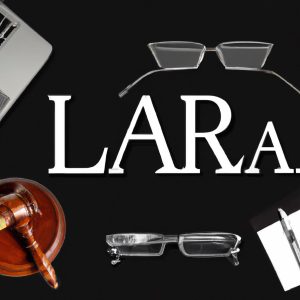As seasoned practitioners in the realm of real estate law, we at Morgan Legal Group are well-versed in the intricacies of various types of tenancies. From joint tenancies and tenancies in common to periodic tenancies and tenancies at will, each form of tenancy entails unique rights and responsibilities for both landlords and tenants. In this article, we will delve into the different types of tenancies, exploring their key features and implications under the law. Join us as we unravel the complexities of tenancy agreements and shed light on the distinctions that define each form of occupancy.
Understanding the Different Types of Tenancy
When it comes to , it is important to grasp the intricacies of each arrangement. There are several kinds of tenancy that individuals may enter into, each with its own set of rights and responsibilities. Knowing the distinctions between these types of agreements can help individuals make informed decisions when entering into a tenancy.
Joint Tenancy: In a joint tenancy, two or more individuals hold equal interests in a property. If one tenant passes away, their share automatically transfers to the surviving tenant(s). It is important to note that joint tenants have a right of survivorship, meaning that upon the death of one tenant, their share does not pass through probate but instead transfers directly to the remaining tenant(s).

Key Considerations when Choosing a Tenancy Type
When considering the type of tenancy for your property, there are several key factors to keep in mind. One important consideration is the duration of the tenancy agreement. Are you looking for a short-term rental option, such as a month-to-month lease, or a long-term commitment with a fixed-term lease? Additionally, it is crucial to determine the level of responsibility each party has in terms of maintenance and repairs. Understanding these details can help avoid disputes down the line.
Another crucial aspect to consider when choosing a tenancy type is the financial implications. Different types of tenancies come with varying costs and fees, such as security deposits, utilities, and rent increases. It is essential to carefully review the terms of the agreement to ensure you are clear on your financial obligations. Additionally, consider the flexibility of the arrangement – does the tenancy allow for subletting or modifications to the property? By carefully evaluating these factors, you can make an informed decision that aligns with your needs and preferences.
Comparing Joint Tenancy and Tenancy in Common
In the realm of property ownership, the type of tenancy chosen can have significant implications for the owners involved. When , it is important to understand the key differences between the two arrangements.
One key difference between Joint Tenancy and Tenancy in Common is the right of survivorship. In Joint Tenancy, when one owner passes away, their share automatically passes to the surviving owner(s). On the other hand, in Tenancy in Common, each owner’s share is considered a separate and distinct asset, meaning that when one owner passes away, their share will be distributed according to their will or state laws of intestacy. Additionally, Joint Tenancy requires all owners to acquire their interest in the property at the same time, while Tenancy in Common allows for owners to acquire their interest at different times.
Legal Implications and Recommendations for Tenants
In a type of tenancy, it is crucial for tenants to fully understand their legal rights and responsibilities. One key legal implication that tenants should consider is the importance of reviewing and understanding the terms and conditions of the lease agreement. It is essential to carefully read the lease agreement to ensure that all obligations, such as rent payment deadlines, maintenance responsibilities, and subletting restrictions, are clearly outlined and understood.
Tenants should also be aware of their rights in the event of landlord disputes or potential eviction proceedings. It is recommended that tenants familiarize themselves with the local tenant laws and regulations to ensure that they are protected in any legal actions. Additionally, tenants should consider consulting with a legal professional, such as the experts at Morgan Legal Group in New York City, for personalized legal advice and representation in any tenancy-related matters.
Q&A
Q: What is a tenancy agreement?
A: A tenancy agreement is a contract between a landlord and a tenant that outlines the terms and conditions of the rental arrangement.
Q: What are the different types of tenancy?
A: There are various types of tenancy, including fixed-term tenancy, periodic tenancy, and tenancy at will.
Q: What is a fixed-term tenancy?
A: A fixed-term tenancy is a type of rental agreement that lasts for a specific period of time, usually for six months or a year.
Q: What is a periodic tenancy?
A: A periodic tenancy is a rental agreement that automatically renews at the end of each rental period, such as month-to-month or week-to-week.
Q: What is a tenancy at will?
A: A tenancy at will is a more informal rental arrangement that can be terminated at any time by either the landlord or the tenant.
Q: Can a landlord change the type of tenancy during a lease?
A: In most cases, a landlord cannot change the type of tenancy during a lease without the tenant’s consent. It is important for both parties to understand the terms of the agreement before signing.
Insights and Conclusions
As we conclude our discussion on the different types of tenancy arrangements, it is clear that understanding the various options available is crucial for both landlords and tenants. Whether you are considering a fixed-term lease, periodic tenancy, or a joint tenancy, it is important to carefully consider the implications of each before making a decision. By being informed and proactive in your approach to tenancy agreements, you can ensure a harmonious and successful landlord-tenant relationship. Thank you for joining us on this exploration of the world of tenancy types.
 Understanding the Different Types of Tenancy
Understanding the Different Types of Tenancy
When it comes to renting a property, it’s important to be aware of the various types of tenancy arrangements that exist. Whether you are a landlord or a tenant, understanding the legal implications and rights associated with different types of tenancy is crucial. In this comprehensive guide, we’ll dive into the different types of tenancy and what you need to know about them.
Tenancy-in-Common
Tenancy-in-common is a type of joint ownership of a property where each owner holds a distinct and separate share, which can vary in size. This type of tenancy is typically used when two or more individuals want to purchase a property together. Each person has the right to transfer or sell their share without the consent of the other owners.
This type of tenancy does not come with the right of survivorship, which means that if one of the owners passes away, their share passes to their heirs and not the other owners. In case of a dispute, a court order may be required to partition the property, allowing each owner to have their share separately.
Joint Tenancy
Joint tenancy is similar to tenancy-in-common, except that it comes with the right of survivorship. This means that if one of the owners passes away, their share automatically transfers to the remaining owner(s). This type of tenancy is most commonly used by married couples or family members who want to own property together.
Joint tenancy is considered a more binding type of tenancy as it requires all owners to have equal shares, equal rights to the property, and the property must be acquired at the same time. It’s important to note that when one of the owners sells their share, the joint tenancy is dissolved, and it becomes a tenancy-in-common.
Sole Tenancy
Sole tenancy, also known as tenancy by entirety, is only available to married couples. Unlike joint tenancy, where each spouse has an individual share, sole tenancy considers both spouses as a single legal entity. This means that both spouses have equal and undivided interests in the property and neither can sell or transfer their share without the other’s consent.
In case of a divorce, the tenancy is dissolved, and the property can be partitioned or sold. However, if one of the spouses passes away, the surviving spouse automatically becomes the sole owner of the property.
Periodic Tenancy
A periodic tenancy is a type of tenancy that does not have a fixed term and can be renewed indefinitely until either the landlord or the tenant gives notice to terminate the agreement. This type of tenancy often follows a fixed-term tenancy that has expired, and the parties have not entered into a new agreement.
The length of the notice period may vary depending on the terms of the rental agreement and state laws. In some cases, the landlord may also choose to end the tenancy by giving a notice to vacate for specific reasons such as non-payment of rent or violation of the rental agreement.
Fixed-Term Tenancy
As the name suggests, a fixed-term tenancy is an agreement between a landlord and a tenant for a specific period, usually six months or a year. During this time, the landlord cannot increase the rent, and the tenant is expected to stay for the entire duration of the agreement.
Once the fixed term ends, the landlord can either renew the tenancy or ask the tenant to vacate the property. Tenants may also have the option to terminate the tenancy early by giving a notice to the landlord, but they may be required to pay a fee or forfeit their security deposit.
Practical Tips for Tenants and Landlords
Understanding the different types of tenancy is essential for both tenants and landlords. Here are some practical tips to keep in mind when entering into a tenancy agreement:
– Before signing a tenancy agreement, make sure you have read and understood all the terms and conditions. Ask for clarification if necessary.
– As a tenant, always communicate with your landlord if you have any concerns or issues regarding the property. Keeping the lines of communication open can help prevent conflicts and misunderstandings.
– As a landlord, ensure that your property is safe and meets all the necessary health and safety requirements before renting it out.
– It’s always a good idea to have a written tenancy agreement in place, even for family and friends. This can help avoid any disputes or conflicts in the future.
– Both landlords and tenants must adhere to the legal rights and responsibilities outlined in the tenancy agreement and state laws.
Benefits of Understanding Types of Tenancy
Having a clear understanding of the different types of tenancy can bring several benefits for both landlords and tenants. As a tenant, it can help you make informed decisions when renting a property and protect you from any potential legal issues. For landlords, understanding the different types of tenancy can help in setting clear expectations, avoiding disputes, and ensuring a smooth rental process.
In conclusion, understanding the different types of tenancy is crucial for both landlords and tenants. It not only helps in avoiding legal complications, but it also facilitates a healthy and positive landlord-tenant relationship. Remember to always read and understand the terms of your tenancy agreement before signing, and communicate openly to prevent any conflicts or misunderstandings.







